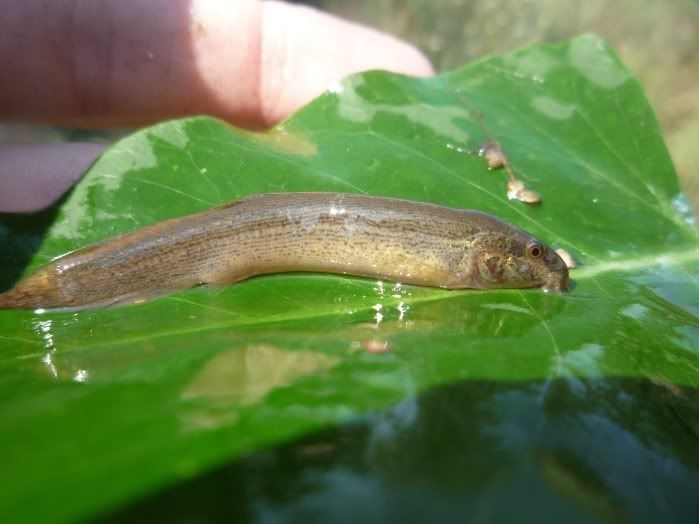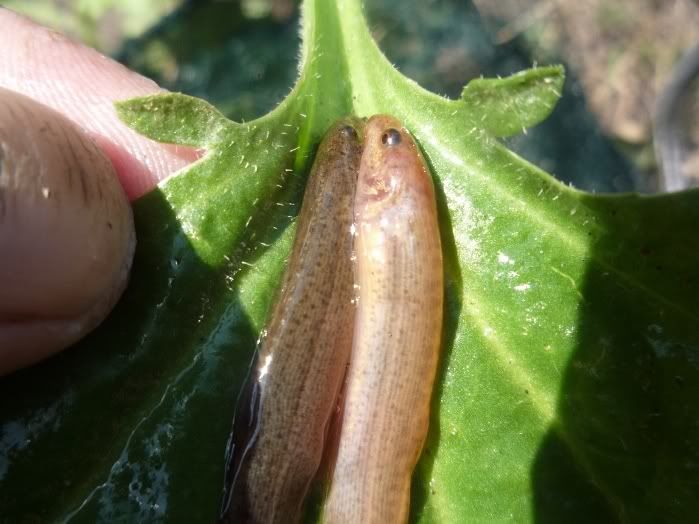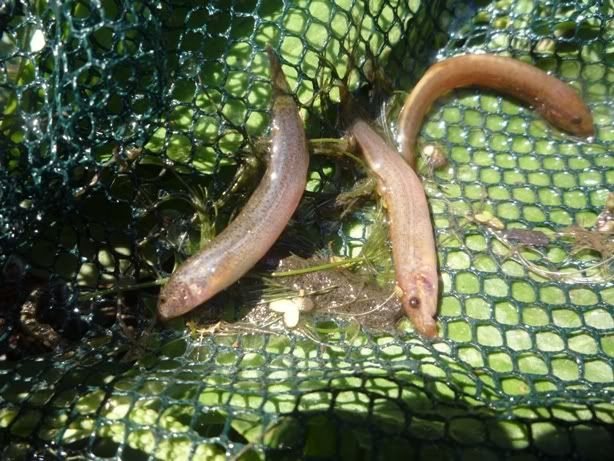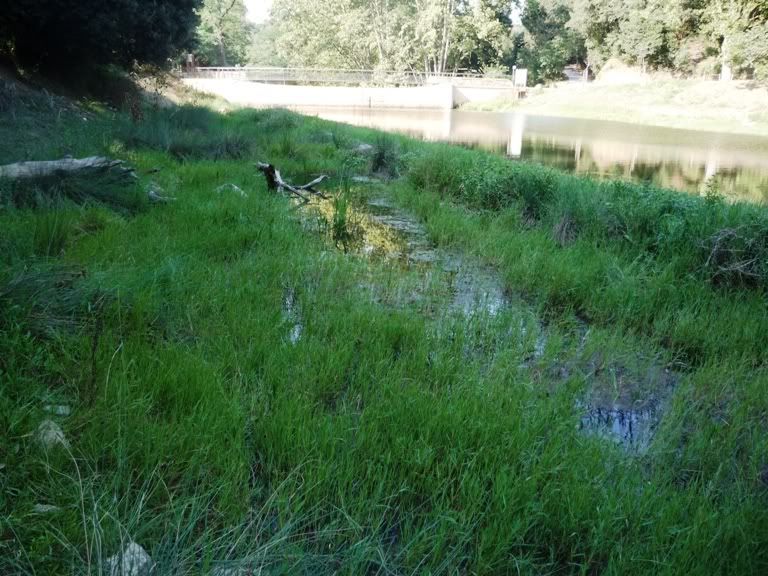Page 1 of 1
Which Misgurnus?
Posted: Wed Aug 27, 2008 6:24 pm
by Matt
Caught these today.
M. anguillicaudatus?

There seem to be two colour forms...

Cheers
Matt
Posted: Thu Aug 28, 2008 12:45 am
by Diana
Wild? or feral? Isn't there a species of Misgurnis native to Europe?
Posted: Thu Aug 28, 2008 4:59 am
by Mad Duff
Personally I think they show a lot of similarity with
Misgurnus mizolepis 
Posted: Thu Aug 28, 2008 8:39 am
by daspricey
Though it does look alot like
mizolepis i would lean toward
anguillicaudatus for two reasons.
Mizolepis is from Asia and is rarely seen in the trade so how could it have go to Spain? where as the common
anguillicaudatus is commonly seen in the trade and has already been introduced into Spain (NE Iberian Peninsula (Thanks again for that paper Matt!

)) and has probably been introduced elsewhere in Spain. Aso considering you never caught any adults also indicates that they have been introduced and hasn't established themselves IMO. The other reason is think
anguillicaudatus is that they are such a varied species it's likely that there is a particular variant looks like this. If you look at
this fishbase page there are several
misgurnus that was considered distinct species.
Then again it might be another misgurnus species; there are 7 recognised species according to fish base.
David
Posted: Thu Aug 28, 2008 12:43 pm
by Matt
Cheers guys.

Diane
M. fossilis is the European species but these are definitely not that one. The reason I mentioned not catching any adults is that there were loads of them at this size. Every scoop of the net was turning up 4 or 5 fish...weird...

Posted: Thu Aug 28, 2008 1:56 pm
by Mad Duff
daspricey wrote:Though it does look alot like mizolepis i would lean toward anguillicaudatus for two reasons. Mizolepis is from Asia and is rarely seen in the trade so how could it have go to Spain?
Its just a hunch David , I spoke to a friend of mine after he returned from Taiwan around 3 years ago and he said that there was a lot of work getting carried out breeding male M. mizolepis to female M. anguillicaudatus. This triploid hybridisation was creating faster growing fish, and he said that the fish produced looked more like M. mizolepis than M. anguillicaudatus.
I am highly likely completely wrong but the fact that lots of small ones but no adults were found would indicate that the fish have been put there by someone and I am just wondering if some of these hybrid fish are making their way out of Asia.
Posted: Thu Aug 28, 2008 2:15 pm
by mistergreen
Mad Duff wrote:
I am highly likely completely wrong but the fact that lots of small ones but no adults were found would indicate that the fish have been put there by someone
Just a thought, from observations though fishing, young fish hang out together in schools with no adult around. And they seem to be from the same brood. I would see different groups of young fish and they're all the same size/age.
Posted: Thu Aug 28, 2008 2:47 pm
by Matt
Posted: Thu Aug 28, 2008 6:33 pm
by daspricey
Mad Duff wrote:daspricey wrote:Though it does look alot like mizolepis i would lean toward anguillicaudatus for two reasons. Mizolepis is from Asia and is rarely seen in the trade so how could it have go to Spain?
Its just a hunch David , I spoke to a friend of mine after he returned from Taiwan around 3 years ago and he said that there was a lot of work getting carried out breeding male M. mizolepis to female M. anguillicaudatus. This triploid hybridisation was creating faster growing fish, and he said that the fish produced looked more like M. mizolepis than M. anguillicaudatus.
Interesting points. I do remember reading a paper with something to do with crossing anguillicaudatus and mizolepis. I have wondered in the past if the weather loaches in the trade actually are true fish.

Emma, have you ever seen wild misgurnus on your lists?
Sorry to go a little of topic, Matt. Thats a beautiful places and nice photos!

David
Posted: Thu Aug 28, 2008 9:01 pm
by Emma Turner
Great pics, once again!

I am so jealous of your days out to look for fish. They look like juvenile
M. anguillicaudatus to me, but then where are the adults?

David - unlike with many other species, the suppliers never ever say whether their
Misgurnus are captive bred or wild caught, but I would think that they were mostly (if not all) captive bred, given that they are a food fish in the east.
Emma
Posted: Fri Aug 29, 2008 6:29 am
by The.Dark.One
You can usually tell mizolepis from anguillicaudatus by the shorter post dorsal area and the ridge of flesh along the same area. If you can get a photo of one in water then we should have a better idea.
Posted: Fri Aug 29, 2008 6:30 am
by Matt
daspricey wrote:
Sorry to go a little of topic, Matt. Thats a beautiful places and nice photos!

David
Whyyy you liddle....!!
Hehe don´t worry David, this is an interesting discussion. Incidentally I now reckon there´s a good chance these are hybrids. Through discussion elsewhere we´ve now confirmed that
Misgurnus hybridisation is occuring in the Far East. Seeing as these mutants are produced for accelerated growth amongst other things I think it´s perfectly feasible that they have been exported for the pet trade as turnover would be optimised that way. Just hypothesising obviously. By the way, does anyone have any thoughts as to why there are two colour forms here?
Cheers
Matt
Edit: Thanks Emma, glad you are enjoying my nonsense!

Lord Foul I´m waiting for photo tanks to arrive from England. After that I´ll try for some more shots. I have a bunch more pics of these too so will have a check later. Am in an internet caff just now.
Posted: Fri Aug 29, 2008 6:47 am
by Bully
Matt wrote:Good point Mistergreen but in this case I don't think that is the answer. The loaches were caught in these two small ponds which are cut off from the lake behind by a few metres. The water is only a couple of feet deep in the middle of the ponds and I took plenty of scoops without finding a single adult fish but there were literally hundreds of these small ones. Is there a chance that something could be limiting their growth perhaps?

Does the lake ever rise above the ponds?
Posted: Fri Aug 29, 2008 1:46 pm
by Matt
From the look of the marginal vegetation I´d hazard a guess at no Bully. I´m going to email the park staff and see if they know anything about these fish as they´re the only ones I found not listed in their guide book.
Posted: Sat Aug 30, 2008 6:20 am
by piggy4
Wouldnt it be easy for eggs to be transfered from small ponds to larger water , via the old egg on a leg method









